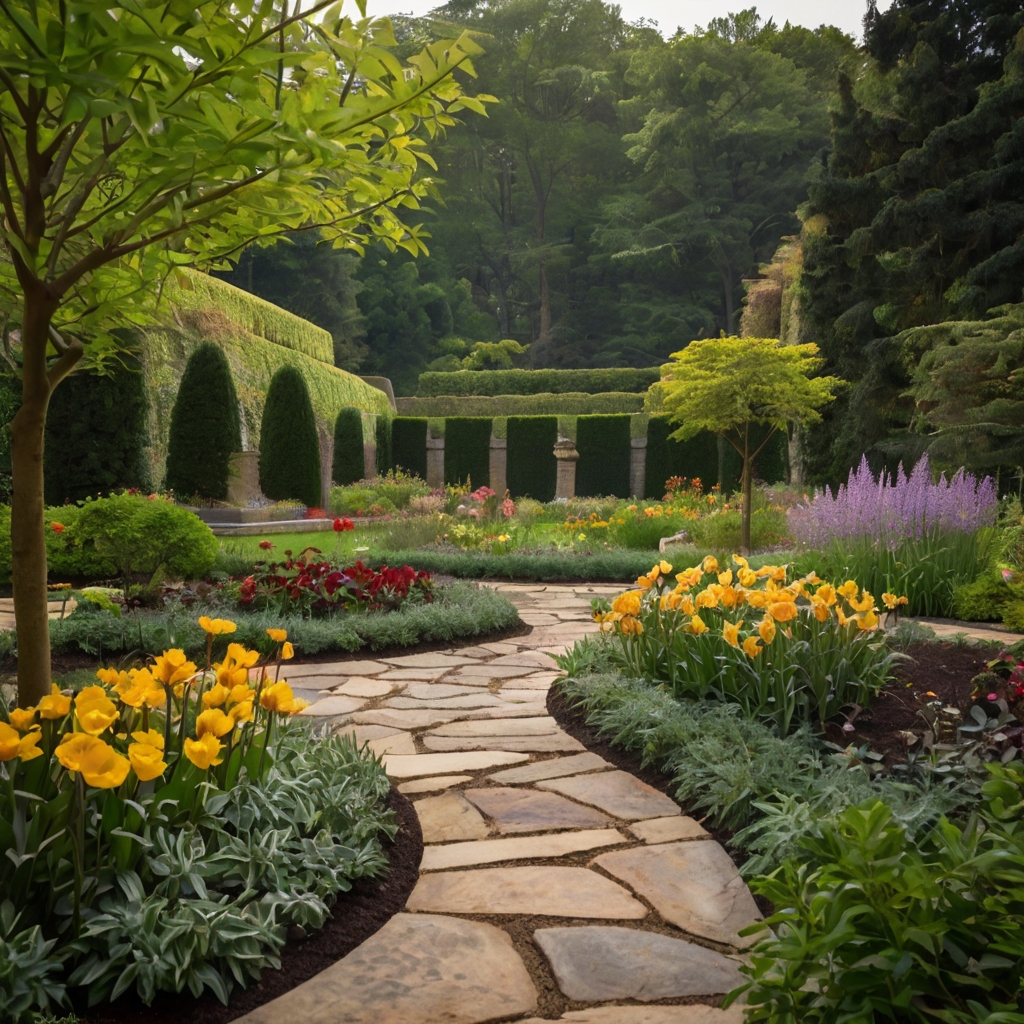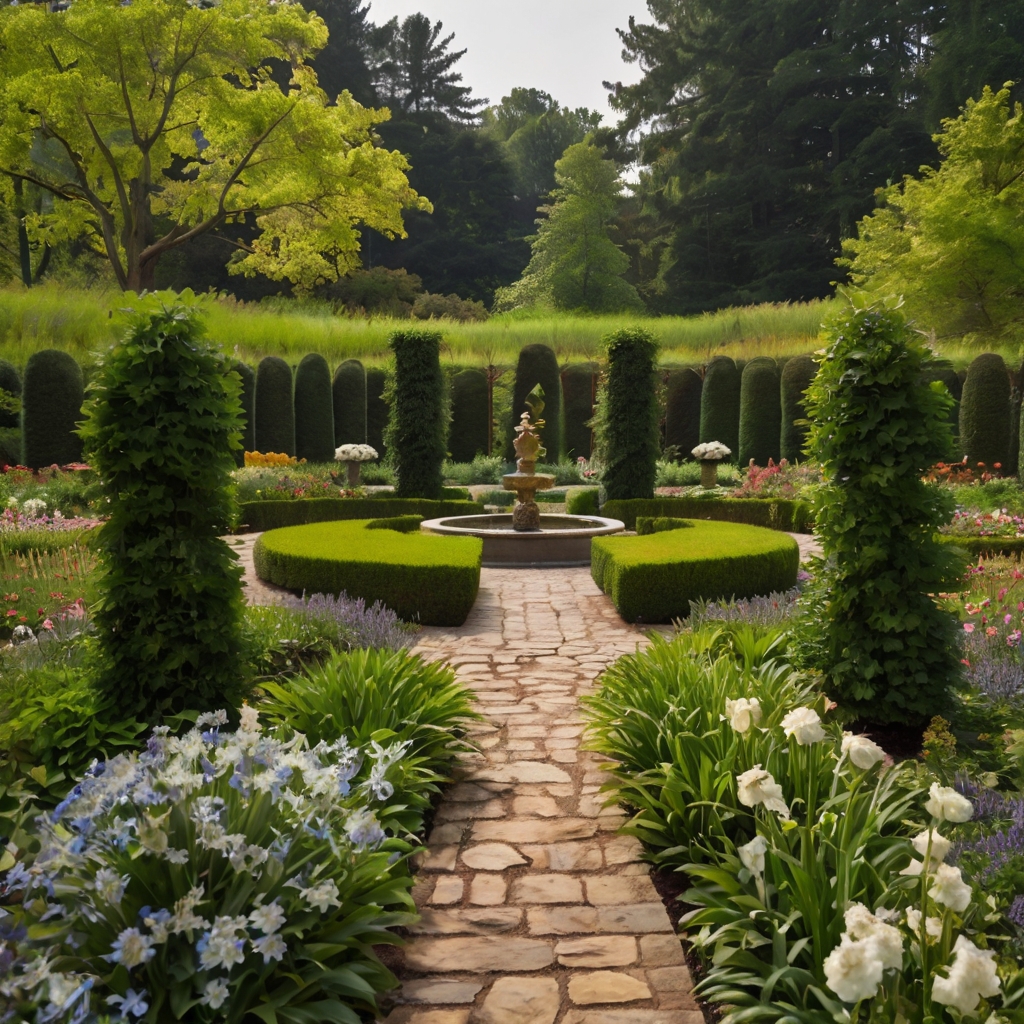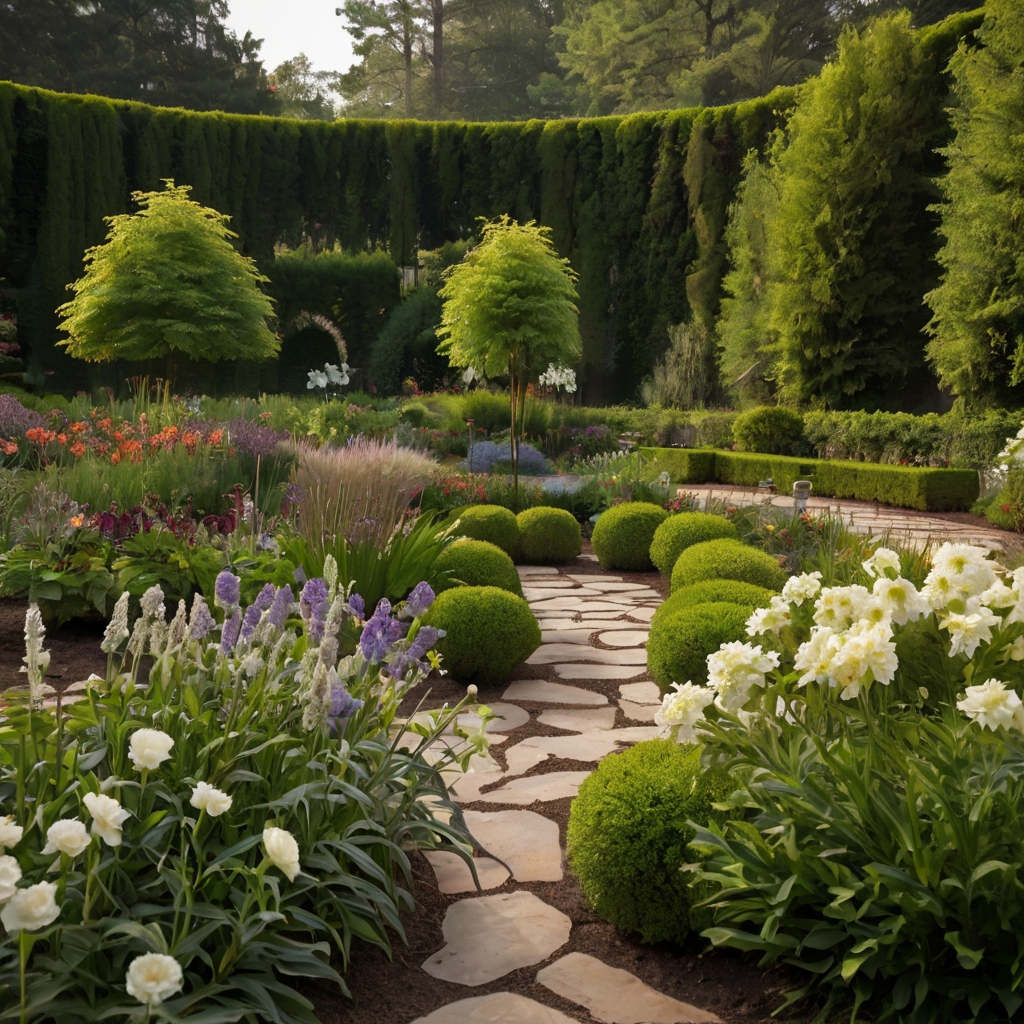Longwood Gardens (Pennsylvania):
Inspiring Garden Design Ideas for Your Home
Introduction
Did you know that 78% of homeowners struggle to find the right garden design ideas despite spending an average of 14 hours researching online? Longwood Gardens in Pennsylvania stands as a living encyclopedia of garden design ideas, offering inspiration that can transform any outdoor space from ordinary to extraordinary. With over 1,000 acres of gardens, woodlands, and meadows, Longwood Gardens showcases some of the most innovative and beautiful landscape designs in North America.
Information About Longwood Gardens
Longwood Gardens is one of America’s premier horticultural display gardens, offering visitors a breathtaking array of garden design ideas across its vast property. The gardens feature:
- Over 11,000 different types of plants and flowers
- 20 indoor garden rooms within a 4-acre conservatory
- 86 acres of manicured gardens
- 4 acres of fountains and water features
- Various garden styles including formal Italian, English cottage, and contemporary designs
- Seasonal displays that change throughout the year
- Educational programs on sustainable gardening and landscape design
The diverse collection of gardens provides endless inspiration for both professional landscapers and home gardeners looking to enhance their outdoor spaces with innovative garden design ideas.

Timing
A typical visit to Longwood Gardens requires approximately 3-4 hours to explore the main gardens and conservatory, though many visitors spend a full day (6-8 hours) to fully appreciate all the landscape designs and horticultural displays. According to visitor data, the average guest spends 4.5 hours exploring the gardens, with dedicated garden enthusiasts often returning multiple times throughout the year to experience seasonal changes in the garden designs. Compared to other botanical gardens in the United States, which average 2-3 hour visits, Longwood’s expansive grounds and diverse garden rooms justify the longer exploration time.
Step-by-Step Exploration of Garden Design Ideas
Step 1: Start at the Conservatory
Begin your journey through Longwood’s garden design ideas in the spectacular conservatory. This glass-enclosed wonderland houses 20 indoor garden rooms, each showcasing different landscaping designs and plant collections.
The conservatory’s East Conservatory provides excellent examples of symmetrical garden design with its formal layout and central water feature. Take note of how different plants are arranged by height, color, and texture—a technique you can easily apply to your home garden.
Pro tip: Visit the Silver Garden for inspiration on drought-tolerant landscaping that combines architectural plants with varied textures and forms.
Step 2: Explore the Formal Gardens
From the conservatory, move to the formal gardens to study traditional landscape designs that have stood the test of time.
The Italian Water Garden, with its symmetrical layout and impressive fountains, demonstrates how water features can serve as dramatic focal points in garden design. Observe how the carefully trimmed hedges create structure and define spaces—a technique that works well even in smaller home gardens.
Pro tip: Take photos of the geometric patterns in the parterre garden for inspiration on creating structure in your own landscape design.
Step 3: Wander Through the Meadow Garden
Next, explore the 86-acre Meadow Garden for naturalistic landscape design inspiration.
This area showcases how native plants can be arranged to create a beautiful, low-maintenance landscape that supports local wildlife. The meandering paths and strategic viewpoints demonstrate how to create journey and discovery in your garden design.
Pro tip: Notice how grasses are used to create movement and texture in the landscape—an easy and affordable way to add interest to your garden.
Step 4: Study the Seasonal Displays
Depending on when you visit, explore the seasonal displays for ideas on how to keep your garden interesting throughout the year.
The spring bulb display, summer flower walk, autumn’s chrysanthemum festival, and winter’s holiday lights all offer inspiration for creating year-round interest in your garden design.
Pro tip: Take notes on plant combinations that catch your eye—these “plant recipes” can be replicated in your home garden at a smaller scale.
Step 5: Visit the Idea Garden
Finish your exploration at the Idea Garden, which is specifically designed to provide home gardeners with practical landscape design concepts.
This area demonstrates container gardening, vegetable garden layouts, and small-space solutions that can be directly applied to home gardens. The display gardens here change seasonally, offering fresh garden design ideas throughout the year.
Pro tip: The staff gardeners are often working in this area and are happy to answer questions about implementing these garden design ideas at home.
Technical and Artistic Information
Longwood Gardens was founded by industrialist Pierre S. du Pont in 1906 when he purchased the property to preserve its historic trees. Located in Kennett Square, Pennsylvania (about 30 miles west of Philadelphia), the gardens encompass 1,077 acres of gardens, woodlands, and meadows.
The climate is humid continental (USDA Hardiness Zone 6b/7a), with four distinct seasons. Annual precipitation averages 45 inches, fairly evenly distributed throughout the year. The gardens are supported by an extensive water management system including 31 ponds and lakes, with the main water source being the Brandywine Creek watershed.
Longwood’s mission is to inspire people through excellence in garden design, horticulture, education, and the arts.
The gardens include:
- Formal Gardens: Including the Italian Water Garden, Flower Garden Walk, and Wisteria Garden
- Conservatory Complex: A 4-acre facility with 20 indoor garden rooms
- Meadow Garden: 86 acres of native plants managed as a naturalistic landscape
- Topiary Garden: Featuring over 35 specimens in various geometric forms
- Idea Garden: Demonstrating practical garden design ideas for home gardeners
- Hillside Garden: Showcasing woodland plants and shade-tolerant species
- Pierce’s Woods: A naturalistic forest garden with native woodland plants
- Peirce’s Park: Historic arboretum with champion trees
- Chimes Tower and Waterfall: A 61-foot stone tower with a 50-foot waterfall
- Open Air Theatre: An outdoor performance space with fountains
- Main Fountain Garden: Recently renovated with 1,719 jets and 30 fountain displays
The gardens feature distinctive plant collections including:
- One of the world’s best collections of bonsai
- Extensive orchid collection (over 9,000 plants)
- Notable collections of camellias, chrysanthemums, and tropical water lilies
- Champion trees including a giant sequoia and dawn redwood
Visitor amenities include:
- The Terrace Restaurant and Café
- Museum shop and garden store
- Visitor center with educational exhibits
- Education and research center with classrooms and laboratories
- 3 miles of walking paths
- Performance venues for concerts and theatrical productions
- Event spaces for weddings and corporate gatherings
Annual festivals and events include:
- Spring Blooms (March-May)
- Festival of Fountains (May-September)
- Fireworks & Fountains Shows (select summer evenings)
- Chrysanthemum Festival (October-November)
- A Longwood Christmas (November-January)
- Orchid Extravaganza (January-March)
Longwood Gardens is open year-round and requires timed tickets for entry, with prices ranging from $25-$30 for adults. Members receive free admission. The gardens are accessible to visitors with disabilities, with rental wheelchairs and scooters available.
The gardens are managed by a non-profit organization with approximately 400 full-time and part-time employees plus 800 volunteers. The maintenance team includes specialists in fountain technology, arboriculture, turf management, and conservatory operations.
Longwood welcomes over 1.5 million visitors annually, with approximately 20% coming from outside the United States. The gardens contribute significantly to the local economy, generating an estimated $150 million in economic impact for the region each year.

Healthy Alternatives to Recreational Trips
While Longwood Gardens offers exceptional garden design ideas, consider these alternatives for additional inspiration:
- Chanticleer Garden (Wayne, PA): A more intimate “pleasure garden” with creative plant combinations and artistic touches that can be easily adapted to home gardens.
- Winterthur Museum and Gardens (Wilmington, DE): Features naturalistic garden design with exceptional woodland gardens and native plant collections.
- Morris Arboretum (Philadelphia, PA): Offers excellent examples of garden design ideas for urban and suburban settings with a focus on trees and shrubs.
- Mt. Cuba Center (Hockessin, DE): Specializes in native plant garden design that supports local ecosystems and requires less maintenance.
For families with children, consider combining your garden visit with nature-based activities like:
- Creating a garden scavenger hunt to engage younger visitors
- Visiting during interactive children’s programs (check Longwood’s calendar)
- Bringing sketchbooks to capture garden design ideas visually
Introductory Suggestions
To make the most of your visit to Longwood Gardens and gather the best garden design ideas:
- Visit during different seasons to see how the gardens change throughout the year.
- Take a guided tour to learn about the design principles behind different garden areas.
- Attend a workshop or demonstration on garden design techniques.
- Bring a camera and notebook to document inspiring landscape designs.
- Consider investing in a membership if you plan to return multiple times for continued inspiration.
- Download the Longwood Gardens app for a self-guided tour focused specifically on garden design elements.
- Visit during weekdays or non-peak hours for a less crowded experience that allows more time to study the landscape designs.
Common Mistakes to Avoid
When visiting Longwood Gardens for garden design inspiration, avoid these common mistakes:
- Trying to see everything in one visit: According to visitor surveys, 65% of first-time visitors report feeling overwhelmed when trying to see all areas in a single day. Instead, focus on areas most relevant to your home garden style.
- Not preparing for weather conditions: Gardens are primarily outdoor experiences—bring appropriate clothing and protection from sun or rain.
- Forgetting to check the bloom calendar: Different plants peak at different times; check Longwood’s website for what’s currently in bloom.
- Overlooking seasonal displays: Each season offers unique garden design ideas—don’t limit yourself to summer visits.
- Missing educational opportunities: Skip the free demonstrations and talks, and you’ll miss valuable insights into the garden design principles.
- Neglecting to take notes: Without documentation, you’ll forget specific plant combinations and design elements that caught your eye.
Visitor Encouragement Tips
To enhance your garden design inspiration visit:
- Participate in seasonal activities: Join a guided walk focused on garden design principles or attend a gardening demonstration.
- Prepare questions in advance: Longwood’s knowledgeable staff can provide insights into implementing garden design ideas at home.
- Bring proper footwear: Comfortable walking shoes will allow you to explore more areas and discover additional landscape design inspiration.
- Consider visiting during special events: Nightscape light installations and fountain shows offer unique perspectives on garden design.
- Take breaks between areas: Process what you’ve seen before moving to the next garden room—this helps retain more garden design ideas.
- Respect the gardens: Stay on designated paths and don’t touch plants to help preserve the gardens for future visitors.
Conclusion
Longwood Gardens offers an unparalleled source of garden design ideas, from grand formal landscapes to intimate garden rooms. By exploring its 1,077 acres of carefully curated gardens, visitors can gather inspiration for creating beautiful, sustainable, and functional outdoor spaces at home. The diverse collection of plants, innovative water features, and changing seasonal displays provide endless possibilities for enhancing your own garden design.
We invite you to visit Longwood Gardens and experience this horticultural masterpiece firsthand. After your visit, please share your favorite garden design ideas and inspiration in the comments section below. Subscribe to our blog for more garden design tips and regional garden profiles.
Frequently Asked Questions
How much time should I allow for visiting Longwood Gardens? Most visitors spend 3-4 hours exploring the main gardens and conservatory. Garden design enthusiasts may want to allow a full day to study the various landscape designs in detail.
What is the best time of year to visit for garden design inspiration? Each season offers unique garden design ideas. Spring showcases bulb designs and flowering trees, summer features lush perennial combinations, fall highlights chrysanthemums and foliage, and winter demonstrates structural garden elements and indoor displays.
Can I take photos of the gardens for my design inspiration? Yes, photography for personal use is encouraged. This is a great way to document garden design ideas that you’d like to adapt for your home landscape.
Does Longwood Gardens offer any courses on garden design? Yes, Longwood offers a variety of educational programs including garden design workshops, continuing education classes, and certificate programs in horticulture and landscape design.
How can I adapt Longwood’s grand garden designs to my smaller home garden? Look for principles rather than exact replicas—notice how plants are grouped, how paths create movement, and how focal points are used. These design concepts can be scaled down for any garden size.
Are there any areas specifically designed to provide ideas for home gardeners? Yes, the Idea Garden is specifically designed to demonstrate practical garden design ideas that can be implemented at home. This area includes vegetable gardens, container displays, and small-space solutions.

How often does Longwood change its garden displays? Major seasonal changes occur four times a year, but smaller adjustments are made continuously throughout the growing season, making repeat visits worthwhile for ongoing garden design inspiration.
